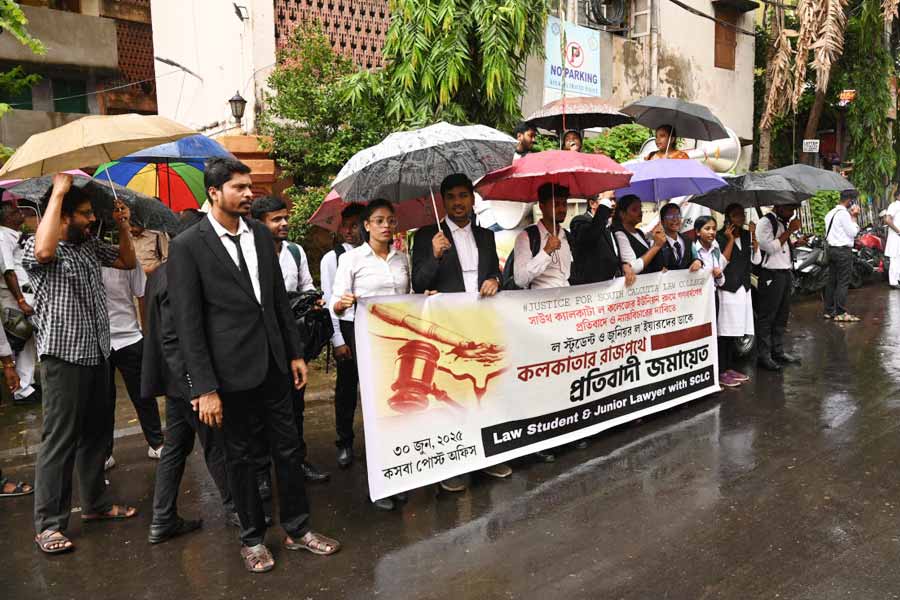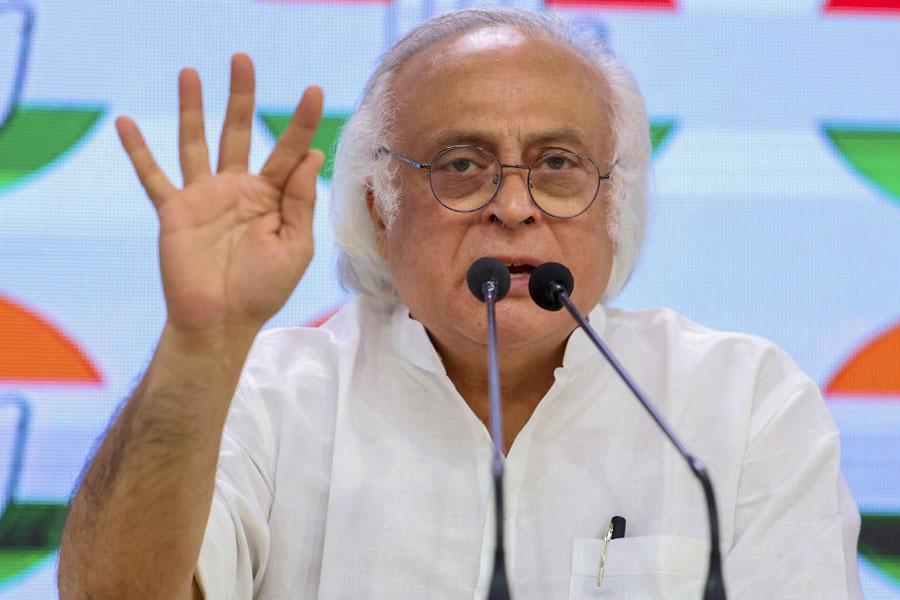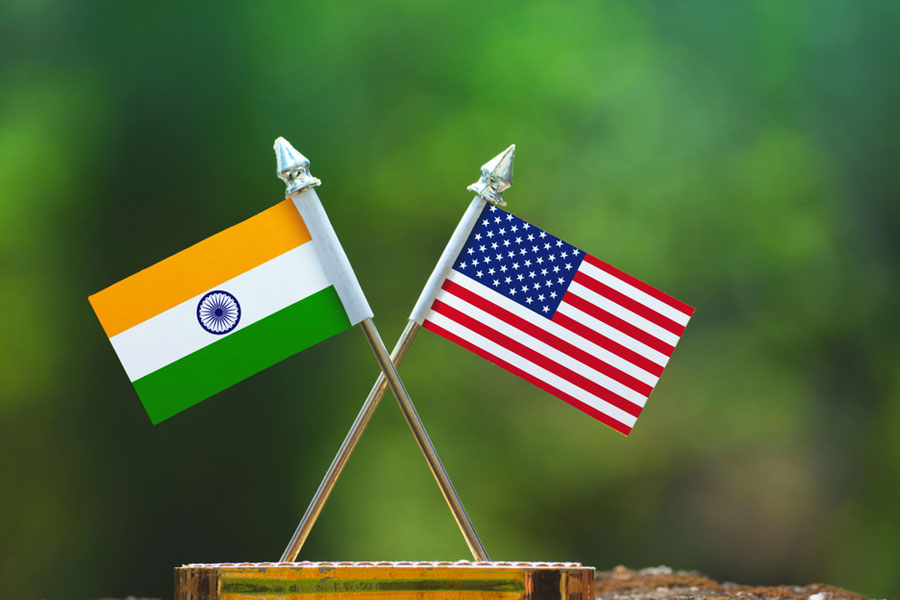 |
| ‘The productive period of a tea garden coincided with the rains and the seemingly trifling task of getting the tea chests from the garden to the steamer often assumed Herculean proportions’ |
Among the galaxy of Westerners who came to Assam during the 19th century and left their indelible mark on the socio-economic scenario, including Nathan Brown, O.B. Cutter, Miles Bronson, Charles Alexander Bruce, a pride of place must be given to the extraordinarily pioneering gentleman, Dr John Berry White. As civil surgeon of the Bengal Medical Services based in Dibrugarh, he made sterling contribution to the development of the region.
Most of us know him, of course, as the pathbreaker of modern medicine in Assam, the individual who was instrumental in having the first educational institution to teach allopathic medicine set up here. But not many people are aware of the fact that White’s contributions extended much further and he, too, embarked on pioneering ventures which contributed extensively to the economic and communication uplift of Upper Assam.
For instance, it had been his awareness of the deleterious condition of road transport in those days which induced him to think of having a railway in an area almost a thousand kilometres away from the nearest railhead at Goalundo in Bengal.
By the second half of the 19th century the British objective of converting Assam into a source of tea as an alternative to the monopolistic production of the commodity by China had taken off, and numerous tea plantations owned by companies or private individuals had mushroomed, particularly in Upper Assam. The enterprising British had also set up a relatively efficient steamer service to transport the produce via the Brahmaputra-Ganges route to be exported to the lucrative “home” market from the port at Calcutta. But the fly in the ointment remained the difficulty of carting the tea chests from the gardens to the steamer ghat. As more and more tea gardens came up, not all of them could be established near the river bank.
In the absence of good roads and since the productive period of a tea garden coincided with the rains, the seemingly trifling task of getting the tea chests from the garden to the steamer often assumed Herculean proportions. Then Lakhimpur district was the worst sufferer, yet it was also the area where most plantations had sprung up. White himself had a tea garden on “Sadiya road” which ran from Dibrugarh to Sadiya and was fringed all along the way with numerous tea gardens. The 60 miles of this unmetalled cart-track built in 1865 was described in the rainy season to be a “perfect slough of despond, strewn with broken carts, burst rice bags and damaged tea boxes.” In fact, while the time for the run by a steamer from Dibrugarh to Calcutta had been reduced to around six days, occasionally it took a planter almost two weeks to get his tea from the garden to the steamer ghat! White’s tea garden, Panitola tea estate, was around 32km away from Mohonamukh, the steamer ghat at Dibrugarh. There had been an unsuccessful attempt at using the water of a stream at this place to make salt, which gave the garden its name. The good doctor, therefore, was more than aware of the difficulty in tea transportation and visionary as he was, conceived the idea of replacing the cart-road with a railway line.
Having arrived in Assam towards the later half of the 1850s, White by the 1870s could be considered to be a veteran among British residents in Assam. Little wonder that he took the lead in transforming his concept into reality. When the chief commissioner of that period, Steuart Bailey, visited Dibrugarh during 1878, White apprised him of the transport problems of the tea planters and made his suggestion of having a light-railway from Dibrugarh to Sadiya. Bailey, appreciating the significance of the idea, sent a proposal to the Government of India, which reacted positively and agreed to subsidise the railway to the tune of Rs 1 lakh annually.
Towards the latter part of 1879, White went to London to explore the prospects of opening a new company to be named the Assam Railway Company. He had to confront a great deal of scepticism and negativity from the British planting community based in Assam, but this did not deter him from pursuing his objective. It was this negativity which caused delay in the establishment of the historic Assam Railway and Trading Company Ltd (ARTC) and not until July, 1881 could the company be incorporated. The rest, as the cliché goes, was history.
On December 25, 1883, the first railway line in Assam was completed and inaugurated on February 18, 1884, by then chief commissioner Charles Elliott. Four hundred guests were invited for the maiden celebratory ride from Dibrugarh to Margherita and back. The proponent of this endeavour, White, was prominent among the passengers.
Not one to rest on his laurels, White ensured that the ARTC play a dominant part in the economic activities of the region, and was even instrumental in setting up a rival steamer company to break the monopoly of the Indian General Steam Navigation Company and the River Steam Navigation Company. The ARTC had acquired steamers and flats while building the railways, and now it sought to use these to transport cargo and passengers. However, this was objected to by the existing steamer concerns and in 1887 the River Steam Navigation Company bought up the entire flotilla of the ARTC. Indubitably, the jewel in the crown of achievements of this extraordinary pioneer was the signal service he rendered towards improving medical conditions in the region.
Despite having quite a few irons, in the fire his first love was towards his profession, and during the almost quarter of a century that he resided in Assam, he worked conscientiously towards providing medical succour not only to the white sahibs, but also to the community in general. He donated Rs 50,000 from his personal savings to set up a medical institution in Dibrugarh, but it was only after his retirement and death in London in 1896 that his admirers took up his dream. The end result was the Berry White Medical School, fittingly named after the versatile doctor, the original structure having survived to this day, with the Assam Medical College at Dibrugarh in the course of time evolving out of this medical school.
It is typical of our community that we have so far failed to honour John Berry White in a befitting manner, though his contributions far exceed most of the “nationalists” whose memories we have sought to keep alive during the post-Independent phase.
Thus, we have named medical institutions in this region after personalities who have had nothing to do with medicine, while a pioneer like White has been ignored and forgotten.
Apparently, the extreme nationalism of the political entity just after Independence resulted in the wheat being thrown out with the chaff, anyone being a member of the colonialist being an anathema, despite his or her intense love for Assam, and contribution towards the region’s amelioration far exceeding that of the politicians. Charles Alexander Bruce, whose pioneering work with tea resulted in the setting up of an industry whose fruits we are reaping to this day, is one such example. John Berry White, whose industry and imagination so dramatically altered the socio-economic scenario of Upper Assam during the latter half of the 19th century, is another.
In this context it is heartening to learn from newspaper reports that an enlightened segment of the medical fraternity is currently attempting to revive the memory of White. Reportedly, the state government is financing an essay at preserving the original medical school building as a heritage site. These are all positive developments for a community which fails to honour those from the past who genuinely attempted to take it forward no matter from what climes they came, is also a community which cannot look towards a progressive future.











